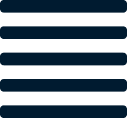In a previous post, we highlighted five reasons why e-commerce brands still need a physical presence, but we don’t think that that physical presence needs to be traditional store. Two new models, the showroom and the pop-up have emerged, and we think they can be just as effective if not more so than a traditional physical store.
According to Pop-Up Republic, pop-ups have driven $10 bn of sales annually and are continuing to grow. Even big brands like Nordstroms have created in-store pop-ups embracing the trend. Why are pop-ups so popular? And how can they be effective for growing brands over having their own retail store? And where do showrooms fit in?
Pop-ups provide flexibility
As a temporary location, a pop-up can provide ample flexibility for experimentation. As a brand, you can lease different size spaces in different locations at different times of year to figure out what works for your brand and resonates with your customers. The inherent transience of a pop-up allows you to A/B test different concepts, something that e-commerce brands are already doing all the time on their websites. Think of a pop-up as an opportunity to A/B test key variables like size, location, layout and assortment of your physical stores. In addition to these benefits, pop-ups are also a temporary expense thereby minimizing the risk of making a bad, long-term financial decision.
Pop-ups create a sense of urgency
The great thing about a pop-up is that it’s something new and temporary. These two elements can combine to encourage customers to buy now and to buy more than they otherwise would. Because they know your store won’t be there forever, customers are encouraged to make their purchase right when they see something they like rather than waiting until the next time they come back. While a physical lease runs 5 - 10 years, most pop-ups won’t be in a single location for more than three months.
Pop-ups can support your e-commerce business
For many emerging brands, the goal of their physical presence (whether wholesale or other), is ultimately to drive traffic to their higher margin direct to consumer business. Not only do pop-ups help you maintain your margin, but they accomplish a similar objective. If the customer was curious about your store, they’ll search for you online and be more likely to buy something than had they not walked by your pop-up. In a lot of ways, you can think of pop-ups as more like event marketing rather than a distribution channel.
Social media creates great marketing reach
In a world of social media, pop-ups become even more attractive because there’s an easy and convenient way to share the fact that you’re opening a pop-up with consumers. What’s more, it creates an opportunity for a conversation with your customers over social media in which you invite your loyal followers to come visit you in person. In the pre-social media days, it would have been very difficult to actually attract customers to your temporary location.
Showrooms are a natural extension of the pop-up
Most showrooms tend to be permanent and have been used successfully by brands like Warby Parker. While traditional stores hold inventory, pop-up shops often do not. Instead, they give the customer an opportunity to experience the product, decide what he or she likes and then place the order. Instead of walking out with the item, the customer gets the exact product they picked out delivered to their home.
In a world in which physical retail stores are closing left and right, brands are searching for a great way to connect with customers and own the customer experience without taking on the liability that a physical retail store often comes with. The great thing about both pop ups and showrooms is that they derisk the financial investment required in creating your own physical space. In the case of the pop-up, the fact that it’s a temporary space limits the financial risk. In the case of a showroom, the fact that there’s little to no inventory investment is a different way to minimize that same financial risk.
Regardless of whether you choose to keep your business e-commerce only or open a pop-up, we’re here to help you focus on your business, not your inventory.
.png)

.png)









.png)



%20hover.png)
.png)
hover.png)







Let us know what you think about this post
Put your comment below.